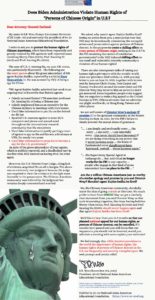It still feels like yesterday. Almost exactly four years ago, also around Chinese New Year, I finished my first paper (or to be exact, two) on the new mirror matter theory. Now I just finished my first invited review paper, which exactly details the original motivations on solving the puzzles of neutron lifetime in my first published paper. It feels like I just completed the circle. So many thanks for Dr. Ben Grinstein’s invitation. I’ve been trying to write a review on mirror matter theory and related experiments and observations for a long time. But it never came through. Ben’s invitation has really pushed me to finish this review paper earlier. It is not the full review paper I have imagined, but still a very important part of it. It focuses on the unique perspectives in the analysis of the neutron lifetime anomaly and the CKM unitarity issue, which have been mostly overlooked by the mainstream. It does not present the full picture and details of mirror matter theory. Instead, it gives the details of the phenomenological $n-n’$ oscillation model, and presents exactly how it can explain the above puzzles and how we can test its unique predictions in laboratory experiments.
Here is the paper: Neutron lifetime anomaly and mirror matter theory
Continue reading “An invited review: neutron lifetime anomaly and mirror matter theory”

